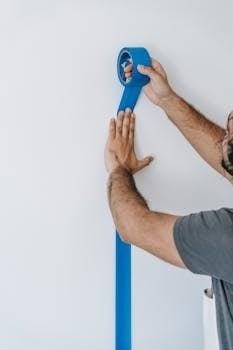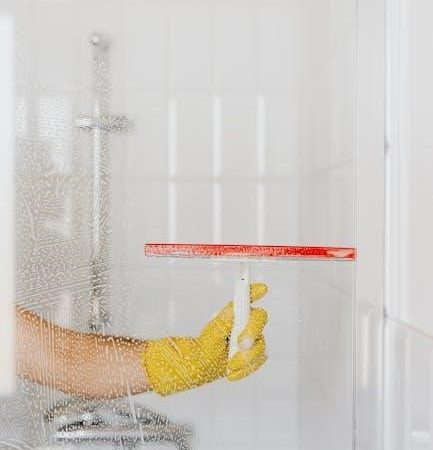how to manually retract hydraulic slide out

Initial Troubleshooting
Before attempting to manually retract a hydraulic slide, it’s critical to check for any obstructions. Inspect both the interior and exterior of the RV, ensuring nothing hinders the slide’s movement.
Confirm that the RV is receiving adequate power. Check the shore power connection, batteries, and generator to rule out a simple power issue as the cause of the slide malfunction.
A blown fuse can easily disable the hydraulic slide system. Locate and inspect the fuses related to the slide out mechanism, replacing any that are visibly damaged or testing as non-functional.
Checking for Obstructions
Before attempting any manual retraction, thoroughly inspect the area around the slide-out, both inside and outside the RV. Look for any objects that may be blocking its path. This could include furniture, luggage, or any other items that may have shifted during travel. On the exterior, check for tree branches, rocks, or debris that could be preventing the slide from moving. Even small obstructions can create significant resistance, making manual retraction difficult or even impossible. Make sure to check the top of the slide, where a build-up of leaves or snow might be the culprit. Clear away any potential obstacles to ensure a smooth retraction process. A careful initial assessment can save time and effort, preventing potential damage to the slide mechanism.
Verifying Power Supply
Before resorting to manual retraction, confirm that the RV’s power supply is functioning correctly. Hydraulic slide-outs rely on an electric pump, so a power issue could be the root cause of the problem. Check the shore power connection to ensure it’s securely plugged in and providing power. If using a generator, verify that it’s running and producing the correct voltage. Inspect the RV’s batteries, ensuring they are fully charged and properly connected. Low battery voltage can prevent the hydraulic pump from operating effectively. If possible, use a voltmeter to check the battery voltage under load. A reading below 12 volts may indicate a problem. Also, inspect the battery terminals for corrosion, which can impede electrical flow. Clean the terminals if necessary. Ruling out power supply issues can save you from unnecessary manual labor.
Inspecting Fuses
After verifying the primary power sources, the next crucial step is to inspect the fuses related to the hydraulic slide-out system. A blown fuse is a common cause of slide-out malfunction and can be easily remedied. Locate the fuse panel, typically found in an easily accessible compartment within the RV. Consult the RV’s owner’s manual or a fuse diagram to identify the specific fuse(s) that control the slide-out motor or hydraulic pump. Visually inspect each fuse, looking for a broken filament or any signs of damage. If a fuse appears blown, replace it with a fuse of the same amperage rating. It’s essential to use the correct amperage to prevent further electrical issues. After replacing the fuse, test the slide-out system to see if it now operates correctly. If the fuse blows again immediately, it indicates a more significant electrical problem that requires professional attention. Keep spare fuses of various amperages in your RV toolkit for such situations.
Identifying Hydraulic Slide Components
Before attempting a manual retraction, understanding the core components of your hydraulic slide system is essential. The hydraulic pump is the heart, providing the necessary pressure. It is typically located in a central compartment. Next are the hydraulic cylinders, responsible for the linear movement of the slide. These are connected to the slide mechanism itself. Hydraulic lines connect the pump to the cylinders, carrying fluid. The manifold valve controls the flow of hydraulic fluid to each cylinder, dictating the direction of movement. Locating these valves is crucial for manual operation. A reservoir holds the hydraulic fluid. Regular checks ensure adequate fluid levels. Finally, familiarize yourself with the slide mechanism itself, including any gear packs or interconnecting shafts, as these may be relevant during manual retraction. Consulting your RV’s documentation can provide specific details on the location and configuration of these components.

Locating the Manual Override
The manifold valves are key to manual operation. They are usually near the hydraulic pump. Look for a block with multiple valves and levers or knobs.
Some systems use a hex bit for manual override. This insertion point is often found in the basement storage area, allowing drill-powered retraction.
Finding the Manifold Valves
Locating the manifold valves is the first crucial step in manually retracting a hydraulic slide. Typically, these valves are situated near the hydraulic pump, which is often found in a basement compartment or utility area of your RV. The manifold itself is a central block, usually made of metal, with several valves attached to it. These valves control the flow of hydraulic fluid to different parts of the system, including the slide-outs and leveling jacks.
Look for a cluster of levers or knobs on the manifold. These are the manual override valves. Consult your RV’s manual for the precise location and a diagram of the hydraulic system. If you’re unsure, tracing the hydraulic lines from the pump can lead you directly to the manifold. Identifying these valves is essential for bypassing the electric controls and manually operating the slides.
Identifying the Hex Bit Insertion Point
Once the manifold valves are located, the next step is to identify the hex bit insertion point. This is where you’ll use a hex bit, often with a drill, to manually control the hydraulic pump. The insertion point is typically found on or near the manifold valve assembly, often protected by a small cap or cover. Refer to your RV’s manual for a specific diagram or location, as designs can vary between models.
Visually inspect the manifold for any recessed areas that accept a hex bit. The size of the bit needed will also vary, but a common size is often included in the RV’s toolkit. Once located, ensure the insertion point is clean and free from debris. This will allow for a secure connection and prevent damage to the mechanism when manually retracting the slide.

Manually Retracting Hydraulic Slides⁚ Step-by-Step
Locate the manifold valves, then carefully open each one using the appropriate tool. Opening the valves releases the hydraulic pressure, allowing manual movement of the slide.
Opening the Manifold Valves
To manually retract hydraulic slides, the first crucial step involves opening the manifold valves. These valves release the hydraulic pressure that normally keeps the slides extended. The manifold is typically located near the hydraulic pump, often in a basement storage compartment. You’ll need to identify the specific valves controlling the problematic slide. Use the correct size wrench or tool to carefully open each valve. It is important to refer to your RV’s manual for the precise location and operation of these valves, as configurations can vary between models. Opening the valves will allow the hydraulic fluid to flow freely, making it possible to physically push the slide back into the RV. Remember to proceed slowly and cautiously, ensuring that you are not forcing anything. If you encounter resistance, double-check that all valves are fully opened before proceeding further.
Physically Pushing the Slide In
Once the manifold valves are opened, the next phase involves physically pushing the slide back into the RV. This process typically requires more than one person, as hydraulic slides can be quite heavy. With the valves open, carefully apply steady, even pressure to the slide room. It’s often easiest to push from inside the RV, using your legs and shoulders for leverage. If the slide is particularly stubborn, try rocking it gently back and forth to overcome any initial resistance. Avoid using excessive force, which could damage the slide mechanism or the RV’s structure. Maintain consistent communication with your helpers to ensure coordinated effort and prevent injuries. If the slide begins to move unevenly, adjust your pushing points to correct the imbalance. The goal is to retract the slide smoothly and completely, without binding or causing further problems.
Ensuring Even Retraction
Maintaining even retraction is paramount when manually operating a hydraulic slide. As you push, constantly observe both sides of the slide room, ensuring they move inward at a synchronized pace. Uneven retraction can lead to binding, stress on the slide mechanism, and potential damage to the RV’s walls or the slide itself. If one side lags behind, immediately adjust your pushing force, applying more pressure to the slower side. It may be necessary to have helpers positioned on both sides to provide balanced assistance. Use visual cues, such as the alignment of the slide’s exterior trim with the RV’s body, to gauge evenness. Periodically pause the retraction process to re-assess and make necessary adjustments. If significant unevenness persists, investigate for obstructions or mechanical issues that may be impeding one side’s movement. Do not force a severely misaligned slide, as this can exacerbate the problem and result in costly repairs. Aim for a smooth, controlled, and balanced retraction throughout the entire process.
Alternative Methods
Some hydraulic systems allow using a drill with a hex bit to assist in retraction. Consult your RV’s manual for specific instructions and the correct bit size for your model.
Using a Drill with Hex Bit
As an alternative to manually pushing the slide, some RV hydraulic systems offer a method using a drill with a hex bit. This approach leverages the mechanical advantage of a power tool to ease the retraction process. First, locate the manual override point, often found in a basement storage area or near the hydraulic pump. This point usually features a hex-shaped opening. Select a hex bit that matches the opening’s size and securely attach it to a drill. Set the drill to a low speed and forward direction (clockwise). Carefully insert the bit into the override point and gently apply pressure while activating the drill. The drill should slowly turn the mechanism, assisting the slide in retracting. Monitor the slide’s movement to ensure even retraction and avoid forcing the mechanism if resistance is met. If one slide moves and the other doesnt, and theyre both hydraulic, the manual override will not help since the pump is working.

When Manual Override Might Not Work
The manual override is useless if only one hydraulic slide is not working and another one is. This is because the pump will still be attempting to push the slide out.
If the Hydraulic Pump is Functional
If the hydraulic pump is still operational, attempting a manual override might not yield the desired results. This is particularly true if only one of multiple hydraulic slides is failing to retract. When the pump is functional, it continues to supply pressure to the system, potentially working against your manual efforts. In such scenarios, the pump’s force can counteract your manual pushing, making it difficult, if not impossible, to retract the slide. Furthermore, attempting to manually retract the slide while the pump is active could potentially cause damage to the hydraulic system or the slide mechanism itself. Before attempting a manual override, ensure the pump is deactivated or isolated to prevent any conflict between the pump’s operation and your manual retraction efforts. This may involve disconnecting power to the pump or closing a valve to isolate the affected slide.
Mechanical Issues Within the Slide Mechanism
Even with a functional manual override procedure, mechanical problems within the slide mechanism itself can prevent successful retraction. Issues such as gear pack failures, binding rollers, or obstructions within the slide rails can render manual retraction impossible. If the slide exhibits unusual resistance or uneven movement during manual attempts, it may indicate a deeper mechanical problem. For instance, a damaged gear pack might prevent one side of the slide from moving, causing it to bind. Similarly, debris or corrosion within the slide rails can create excessive friction, making it too difficult to push the slide in manually. In these cases, forcing the slide could cause further damage. A thorough inspection of the slide mechanism is necessary to identify and address any underlying mechanical issues before attempting manual retraction. If the problem cannot be identified or resolved, professional assistance may be required.

Safety Precautions
Prioritizing safety is paramount when manually retracting a hydraulic slide out. Before commencing, ensure the area around the slide is clear of people and obstructions. Wear appropriate safety gear, including gloves and eye protection, to prevent injuries. Never place yourself in a position where you could be pinched or crushed by the moving slide. Be mindful of the slide’s weight and use proper lifting techniques if physical force is required. If using tools like a drill, adhere to the manufacturer’s safety guidelines. If you’re working with a partner, communicate clearly and coordinate your actions. Avoid applying excessive force, which could damage the slide mechanism. If you encounter significant resistance, stop and reassess the situation. Remember, your safety is more important than retracting the slide quickly. If you are not comfortable performing the manual retraction, seek professional help.
Seeking Professional Assistance
If you’ve exhausted all manual retraction methods for your hydraulic slide out and it remains stuck, it’s time to seek professional assistance. A qualified RV technician possesses the expertise and specialized tools to diagnose and resolve complex slide-out issues safely and effectively. Attempting further self-repairs could potentially worsen the problem or cause additional damage, leading to more costly repairs in the long run. Before contacting a technician, gather information about your RV’s make and model, as well as a detailed description of the problem you’re experiencing. This will help the technician understand the situation and provide a more accurate assessment. Don’t hesitate to reach out to a reputable RV service center or mobile repair service for help. It’s better to be safe than sorry when dealing with hydraulic systems and intricate mechanical components. A professional can accurately identify the underlying cause and implement the necessary repairs to get your slide working correctly again.





